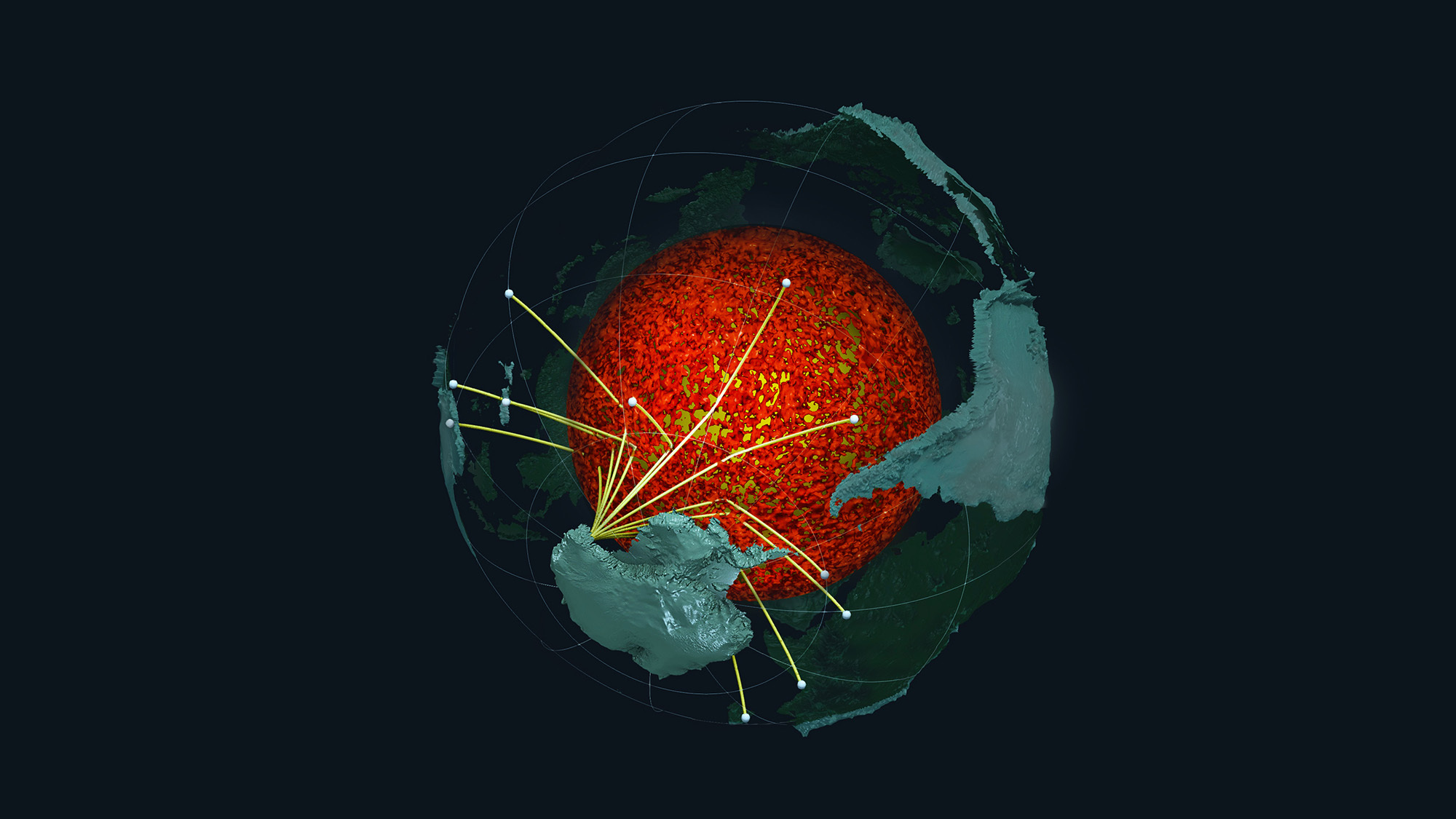

A thin, yet dense, sunken ocean floor could be deep between the Earth’s core and mantle. The findings of a new study published April 5 in the journal Science Advances used global-scale seismic imaging of Earth’s interior to search for clues of a long buried ocean.
About 2,000 miles below the Earth’s surface, the planet’s rocky mantle meets the molten, metallic outer core. Previously, a possible ancient ocean floor on the core-mantle boundary had only been observed in isolated patches. The latest research suggests that this layer may actually cover a large portion of the core-mantle boundary of Earth.
[Related: Seismologists might have identified the deepest layer of Earth’s core.]
Understanding the composition at the core-mantle boundary on a large scale is difficult since it is so deep within the Earth. The researchers in this study from the United States and the United Kingdom used a network of 15 seismographs spaced out around northwestern Antarctica and collected data for three years. The seismograph stations in the network scans the Earth’s seismic waves to create an image of the Earth deep below our feet, similar to how an MRI scans the body and creates an image of what is inside.
The team noticed that at the core-mantle boundary, seismic waves slowed down when they hit a particular layer. This layer is about three to 25 miles thick, but is actually very thin in terms of planetary composition. Since the seismic waves slowed down in these areas, they are categorized as ultra-low velocity zones (ULVZ). The zones were likely subducted underground millions of years ago, when the Earth’s plates shifted, and are denser than the rest of the deep mantle. They are similar to “mountains” along the core-mantle boundary, and their heights range from less than three miles to over 25 miles.
[Related: The Earth’s inner core could be slowing its spin—but don’t panic.]
“Analyzing 1000’s of seismic recordings from Antarctica, our high-definition imaging method found thin anomalous zones of material at the CMB [core-mantle boundary] everywhere we probed,” Arizona State University geophysicist Edward Garnero said in a statement. “The material’s thickness varies from a few kilometers to 10’s of kilometers. This suggests we are seeing mountains on the core, in some places up to 5 times taller than Mt. Everest.”
According to the study, these underground peaks may play a critical role in how heat escapes the Earth’s core. The core powers Earth’s magnetic field and some of the material from it can even be ejected up to the Earth’s surface during volcanic eruptions.
“Seismic investigations, such as ours, provide the highest resolution imaging of the interior structure of our planet, and we are finding that this structure is vastly more complicated than once thought,” study co-author and University of Alabama geoscientist Samantha Hansen said in a statement. “Our research provides important connections between shallow and deep Earth structure and the overall processes driving our planet.”
